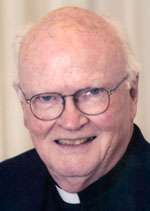Because of my past experience as a university president, I’m often asked for advice on fundraising. I find myself repeating advice I received long ago from a very successful fundraiser, namely, that “if you want to get milk from a cow, you don’t send her a letter; you sit down and start talking to her.”
There is no substitute for direct contact with potential donors, and no getting around the need to look a potential benefactor in the eye and ask for the gift. This, of course, implies that you have a list of potential donors and ways of getting in touch with them. So attention has to be paid to “friend raising” before effective fundraising can begin. It also presumes that you have some idea of the amount a potential donor might reasonably be expected to contribute.
But by far the best advice I have to give is summed up is this simple dictum: “It is the heart that gives; the fingers just let go.” I don’t know where I first heard that. Original or not, it is worth repeating and can be adopted as a working principle by anyone who has the responsibility of raising serious money.
[hotblock]
No one likes to ask for money, but a lot of money remains on the table because an effective “ask” was never made. It helps, if the one responsible for the “ask” realizes that fear of rejection lies behind the common hesitancy to ask for money. Once it is understood that it is only the request, not the requester, that is subject to rejection, the fundraiser can hold his or her head high and remain smiling while making the “ask” regardless of the eventual outcome.
I once asked a wealthy donor who had no previous connection with my university for $10 million to endow a few faculty chairs and my request drew an immediate and flat refusal. I tried for $5 million and was turned down. “How ’bout car fare home?” I asked. He laughed and gave me $250,000 for scholarship assistance from his petty cash account.
He liked to help needy students but he had no interest in helping a university with which he had no personal links to celebrate its centennial. You won’t win every time, but neither will you always lose if you just hang in there.
First find out where the heart is and then do your best to match up the request with the object of that heart’s affection.
Stories abound of multimillion-dollar gifts from successful alumni who, as students, lost a parent and were unable to pay tuition, but were kept on the rolls by institutional compassion and largesse. Cancer survivors give for cancer research. Parents of autistic children contribute to programs aimed at managing autism. Music and visual art lovers want to support the arts. Sports enthusiasts direct their philanthropy toward athletes and athletics.
Find out where the good memories of potential donors lie and match up the request with programs or persons at the institutions that are providing similar memories for others. It is particularly appropriate for Catholic institutions — especially educational and healthcare institutions — to direct their services toward the poor. Let potential donors meet, personally or by photograph or film, the impoverished beneficiaries. This, quite literally, puts a face on the service, a face that is capable of moving the heart.
Always remember, it is the heart that gives, the fingers just let go.
***
Jesuit Father Byron is university professor of business and society at St. Joseph’s University, Philadelphia, Pennsylvania. Email: wbyron@sju.edu.
PREVIOUS: How to stop cyber bullying right now
NEXT: Husband’s a spender, wife’s a saver: What do they do?




Share this story